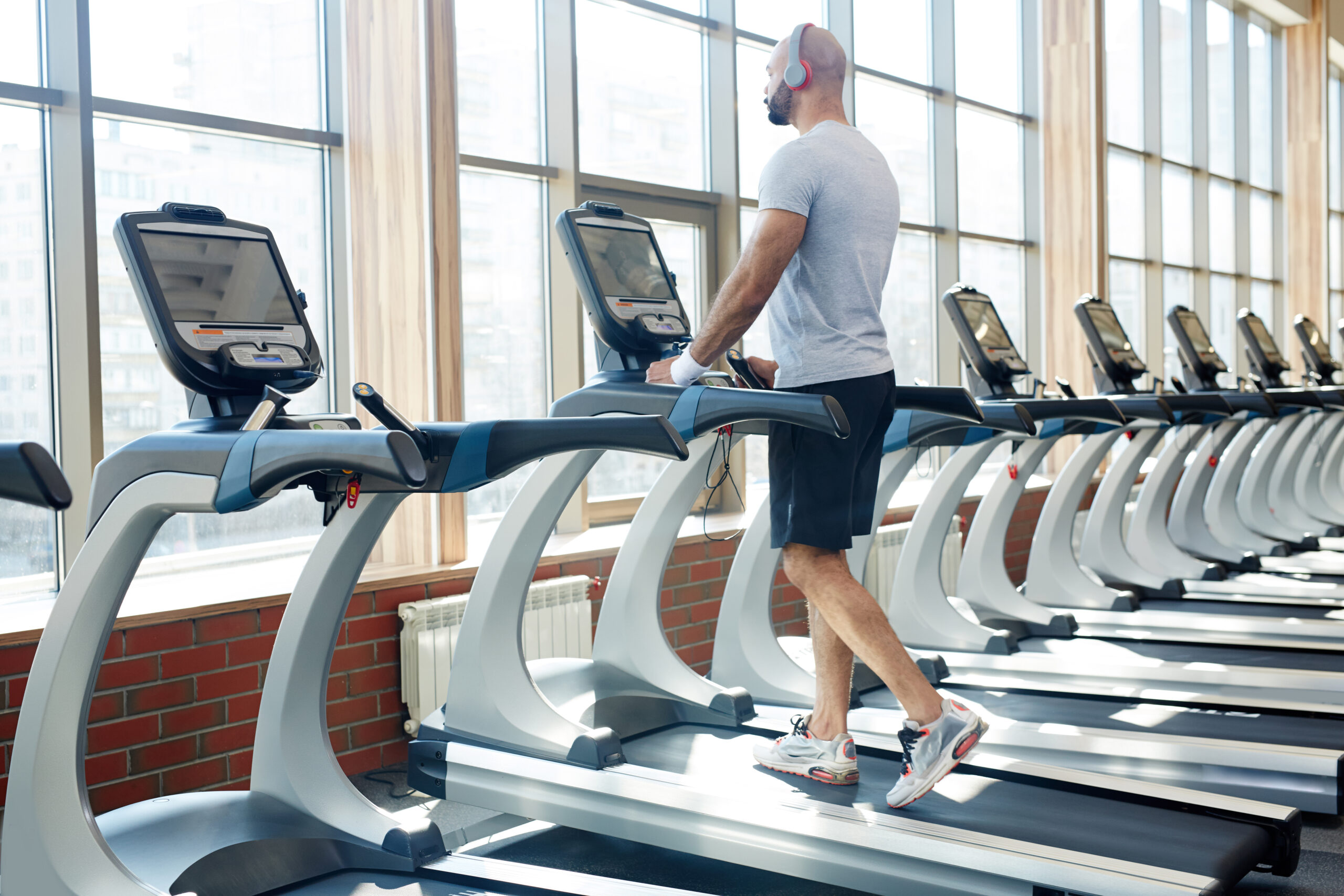Choosing a treadmill – 6 key points
Choosing an electric treadmill for home is not as simple as it might seem. Like any other piece of sports equipment, you need to make sure that the treadmill fits your workout needs and physical characteristics. For the same reason that you would not buy a children’s bicycle to use for working out, similarly you will not be able to choose a treadmill that is under-proportioned to your needs.
The treadmill is a simple and complex piece of equipment at the same time that has many moving parts and a structure and motor that are constantly stressed by the physical activity you perform.
Often we are beguiled by super-cheap prices that while they may seem attractive, always hide more or less obvious flaws such as an underpowered motor or a belt that is too small.
The power of the motor must be suitable for your weight
The weight of the person is undoubtedly the first element to take into consideration when choosing an electric treadmill since the power of the motor must be proportionate to the weight it will have to move. The first rule in choosing a treadmill is therefore to:
Choose a motor power suitable for the weight of the heaviest person who will use the treadmill.
The motor is therefore the key component of an electric treadmill and should have sufficient power to:
- overcome the friction between the belt and the platform (with your weight on it)
- move your weight throughout the workout
- never go under stress and therefore never overheat
Underpowered motors, when they go under stress, heat up easily. Heat is unfortunately the main enemy of electric motors because it irreparably damages the internal components, reducing their performance and increasing the possibility of this one burning out, and for this reason it is necessary that the motor has a power proportionate to the person who will have to use it.
Obviously, less powerful motors will also be less expensive and vice versa more powerful motors will be more expensive. One piece of advice is not to save money by choosing a less powerful (and therefore cheaper) motor because you would run the risk of making a wrong purchase and throwing your money away.
Let’s take stock of the situation
| 1.75 – 2.50 Horses (HP) | 2.50 – 3.00 Horses (HP) | 3.00 – 3.50 Horses (HP) | 3.50 – 4.00 Horses (HP) |
| Suitable for people with a body mass of 80 kg or less | For people from 80 kg to 100 kg | For people from 100 kg to 120 kg | Suitable for people with a body mass of more than 120 kg |
In addition, depending on the duration of the workouts, some variation is possible
| Workouts of less than 30 minutes | Workouts from 30 to 120 minutes |
| ou can choose a motor power of at most 0.25 Horsepower (HP) | YYou should choose a motor power of at least 0.25 Horsepower (HP) higher |
There are also 2 types of electric motor:
| DC motor | AC motor |
| Simpler and cheaper, typical of products in the home fitness range | More complex and more expensive, typical of products in the professional range |
The length of the ribbon should be proportionate to your height
So, reading the data sheet of a treadmill, if for example you read that a model has a 2.50HP DC motor it means that this motor will be suitable for people weighing about 80Kg who will want to run and/or walk and that it will not be suitable for prolonged use.
It is very important to choose a belt length that is appropriate for your height since a tall person will have a much wider stride than a shorter person.
In addition, stride width is directly proportional to running speed. For the same height, the faster one will go, the longer the tape should be.
- Wider stride or higher speed = Need for longer tape length
- Shorter stride or lower speed = Option to choose a shorter tape length
For your convenience, here is a table to best guide you in choosing a ribbon length:
| Speed | Height up to 170 cm | Height up to 190 cm | Height over 190 cm |
| 10 Km/h | 125 cm | 130 cm | 140 cm |
| 14 Km/h | 135 cm | 140 cm | 145 cm |
| 18 Km/h | 140 cm | 145 cm | 150 cm |
| 22 Km/h | 145 cm | 150 cm | 155 cm |
Will you walk or run?
Walking and running are two separate and distinct sports activities. People mistakenly think that walking, being a less strenuous activity for the body, is also less strenuous for the treadmill.
It sounds strange, but for an electric treadmill, walking turns out to be more “strenuous” than running. The reason is very simple in that at low speeds, the torque of electric motors is also low. This results in a higher current draw to run the motor resulting in easy overheating.
The motor is also connected to a fan that allows it to be cooled, but if it runs at low speed, it will not have the ability to lower its temperature.
Always remember that heat is the main enemy of electric motors!
In addition, the motor, while walking, will have to constantly move the belt with the person on it. In running, on the other hand, there is a moment when the body is totally detached from the tape (flight phase to be exact). This makes it so that in running there are constantly times when the motor will have to shift our weight and times when it will not.
Tilt? None, electric or manual?
Do you prefer running and walking flat or also uphill? The inclination of the belt is one of the important features to consider. In fact, inclination allows you to increase the intensity of your workout without the need to increase the speed of walking and running.
Let’s take walking as an example.
To increase the intensity of walking, it is not possible to increase the speed beyond a certain limit. Exceeding 6 km/h walking begins to be very difficult and it comes naturally to start running. If for one reason or another one did not want to or could not run, that is when increasing the incline would become the only method of increasing the intensity of walking.
Thus, treadmills can be without incline, with manual incline or with electric incline
- No incline: These treadmills can only be used on the flat, and it is not possible to incline the belt. Ultra compact treadmills are often among those to be without a system for tilting. Treadmills without inclination, given the same features, are generally cheaper than their counterparts with inclination.
- Manual incline: Treadmills with manual incline have the ability to adjust (often on a few levels) the incline of the belt. Among the incline systems, the manual one is definitely cheaper but at the same time more inconvenient. In fact, to make the manual adjustment, it is necessary to stop the workout in order to change the inclination of the belt.
- Electric tilting: This is definitely the tilting system to be preferred. The main advantage of electric incline treadmills is that they allow you to adjust the incline of the belt via buttons on the console without the need to stop the workout. Another advantage is that the training programs preinstalled in the treadmill can manage both speed and incline allowing for more effective workouts.
Do you have space problems?
If you have space problems, you can choose a slim or ultra slim treadmill. These treadmills definitely have the great advantage of being able to fold up and take up very little space inside the house. They are often more practical in that they can be moved more easily and stored away when not in use. They have the disadvantage of being more expensive (for the same features) than the corresponding classic treadmills.
| Classic | Slim | Ultra slim | |
| Pro | Stronger structure Better value for money | Smaller footprint | Very small footprint Practicality in use Light weight |
| Cons | Larger footprint | More expensive for same features | More expensive for same features Less robust construction |
Choosing a treadmill with cushioning
Choosing a treadmill with cushioning is a point not to be overlooked as good cushioning reduces the load on joints by 20% to 40%
Road running always has some drawbacks that we do not find in treadmills, namely: harder surface and unevenness of the ground. Treadmills have the advantage of having an even surface and not as hard as a road surface.
The cushioning system is the elastomers whose job is to cushion the impact on the belt. It is important to pay attention not so much to the number but to the type of elastomers present.
Treadmills with fewer elastomers may be more cushioning than models with more
In addition, the cushioning of a treadmill is obtained not only from the elastomers but from the combination of: elastomers, frame and running surface.
This article was originally written in Italian and translated English via deepl.com. If you notice a major error in the translation you can write to [email protected] to report it. Your contribution will be greatly appreciated



